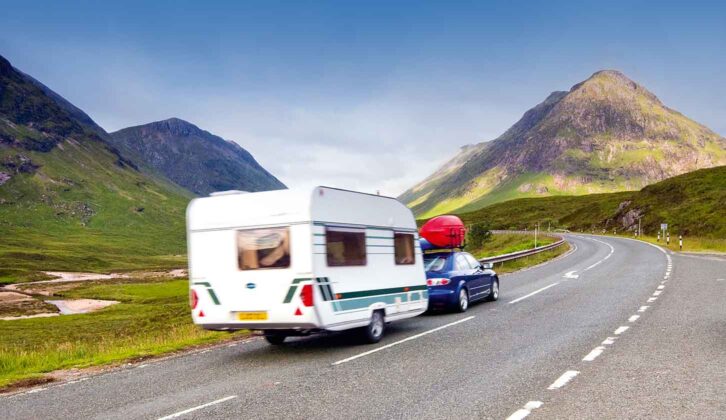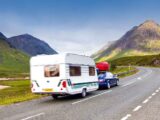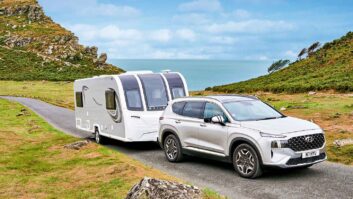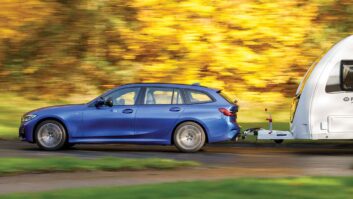For some caravanners, towing can be the least enjoyable part of the holiday. The familiar sensations of driving feel odd with an extra tonne and a half behind your car. You’re now steering a vehicle that’s twice and long and hinged in the middle.
It’s understandable that you could find this a daunting prospect. However, it’s not as hard as it looks, though. And to help you get it right, I’ve compiled this top 10 towing list of things that every caravanner should know before they get behind the real of their tow car.
Before you set off in your van, it’s also worth familiarising yourself with these 23 technical mistakes you’ll want to avoid in your caravan – it could make the difference when you’re on tour.
1 The 85% guideline
When matching a car to a caravan, it’s best to keep the weight of the caravan at or below 85% of the kerbweight of the tow car. While it may seem like a number plucked from thin air, it does help to keep car and caravan stable. Even if the car has been approved to tow heavier weights, that doesn’t guarantee stability on an exposed stretch of road once the wind picks up.
Find your car’s kerbweight and the Maximum Technically Permissible Mass of your caravan in its handbook (or on its weight plate) – these are two very important caravan weights to be aware of for safe towing.
Experienced caravanners may pull up to a 100% match, but it’s never a good idea to tow a caravan that weighs more than the tow car.
2 Noseweight matters…
Noseweight is often forgotten in all the attention around car-to-caravan matching ratios, but this also makes a big difference to stability. The term ‘noseweight’ means the weight the caravan hitch applies to the towball.
Aim for 5-7% of the caravan’s actual laden weight (that is, how much it really weighs when you have loaded up for a trip away – you can check this on a weighbridge). If the towbar’s download limit is less than this, you may need to be very careful when loading a caravan. A noseweight gauge (available from most caravan dealers) will help.
3 … but weight isn’t everything
Picture two identical cars and caravans, both loaded with the same gear. One could be safe and stable, the other a tricky handful.
Why? Because it’s not just the total weight of the load that matters. Where that weight is carried is just as important. Keep heavy objects low down and above the axle (or axles). There may be lots of storage underneath a fixed bed at the back of the tourer, but you should only use this space for light items. Lots of weight at the back can lead to a pendulum effect, making the car and caravan unstable.
4 Mirror, mirror
I do mutter under my breath whenever I see a caravanner towing without extension mirrors.
Yes, the best caravan mirrors are an extra expense. Yes, they can wobble and shake a bit (although not much if fitted carefully). But they are needed to tow safely and legally.
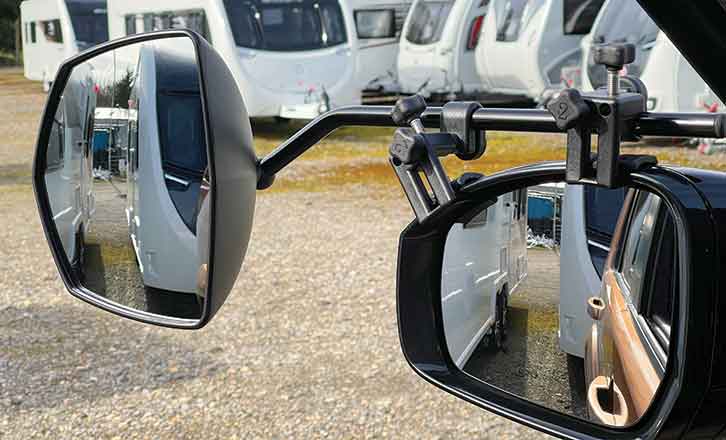
Unless your caravan is unusually narrow, you won’t be able to see four metres to the side and 20 metres behind the driver without extension mirrors. The caravan will obscure too much of the view behind, making it impossible to overtake or change lanes safely.
Aside from legal requirements, fitting high-quality extension mirrors allows you to see behind you on both sides and makes for safer and less stressful towing.
5 You’re never too old to learn
The day you threw your L-plates in the bin you may have promised yourself that you would never take another driving lesson again.
If so, this is a promise you’d be well-advised to break. Nobody is born knowing how to tow a caravan. Learning from an expert is money well spent.
There are often ‘try towing’ events at the big caravan shows, and both major caravanning clubs run courses. You’ll learn the process of hitching up a caravan, how to tow safely on the road, and discover how to reverse confidently.

6 Pretend you’re a pilot
You may have read the book The Checklist Manifesto. The author argues that more of us should copy airline pilots and use checklists to complete important tasks correctly.
A checklist is really handy whenever you hitch up and go caravanning. Run through everything you have learned on your towing course before every trip to make sure that you, your car, and your caravan, are safe and ready to go.
7 A little speed makes a lot of difference
The speed limits when towing a caravan are different to driving when you’re not hitched up. Travelling at 60mph may seem rather slow, especially when you see other drivers going more quickly. Nevertheless, the motorway towing limit is there for a reason. Don’t be tempted to go faster. You’ll soon find that just a small change in speed can have the caravan moving around more and starting to take the back of the car with it.
Equally, don’t assume that your car and caravan will always be safe and stable at 60mph. Even dropping down to 55mph can make a difference.
8 Watch the weather
A safe and sensible speed will change with the weather. An inexperienced tow car driver is often surprised by how much difference the wind makes when towing. Be ready to slow down, take a more inland route, or even postpone your journey when towing.
If it’s raining, be sure to leave an extra-big gap to the car in front so you can stop in the distance you can see to be safe.
Take a look at my guide to towing a caravan in winter if you want more guidance on caravanning during the colder months.
9 Phone ahead
I once met a caravanner who had accidentally pinned his wife between their caravan and a dry stone wall. At least I think it was accidental.
They were almost at their campsite, travelling by the most obvious and direct route. The trouble was, this took them down a tiny lane for the last couple of miles. When it became too narrow to continue the driver decided to make a U-turn at a farm gate, making his other half wish she’d made a U-turn at the altar.
The moral of the story? Check the campsite’s website or phone ahead to check the recommended route for the last few miles. Google Maps can also be a help to see if what appears to be the best route in a road atlas or sat-nav is really the right way to travel with a caravan.
10 Using a motor-mover isn’t cheating
Reversing a caravan is something most drivers will master with practice, especially after professional tuition. But if you’d rather install a motor-mover and never once reverse onto a pitch, that’s fine. Don’t forget – you’re on holiday!
If you found this useful, don’t miss my caravan towing tips either, where I share my top advice for staying safe on the road.
Lead image: David Lichtneker / Alamy Stock Photo
If you’ve enjoyed reading this article, why not get the latest news, reviews and features delivered direct to your door or inbox every month. Take advantage of our brilliant Practical Caravan magazine SUBSCRIBERS’ OFFER and SIGN UP TO OUR NEWSLETTER for regular weekly updates on all things caravan related.
